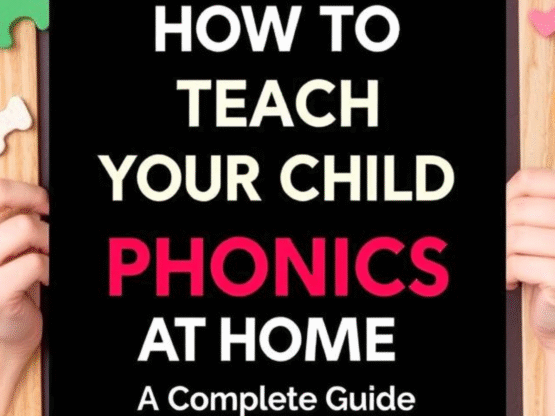Phonics is a powerful tool for helping children learn to read by connecting letters with sounds. It builds the foundation for decoding words and developing strong reading skills. Teaching phonics at home can be a fun and rewarding experience for both parents and children. Here’s a step-by-step guide to get started:
1. Build a Strong Foundation
- Create a Comfortable Learning Environment: Ensure your child feels relaxed and excited about learning.
- Assess Current Knowledge: Determine what your child already knows about sounds, letters, and words to tailor your approach.
2. Start with Letter Sounds
- Teach Sounds Before Letter Names: Focus on phonemes (individual sounds) rather than letter names initially.
- Use Visual Aids: Flashcards, songs, and rhymes can make learning engaging.
- Begin with Vowels and Consonants: Introduce vowels (/a/, /e/, /i/, /o/, /u/) and consonants (/b/, /c/, /d/, etc.).
- Reinforce Through Songs and Rhymes: Singing phonics songs helps children remember sounds.
3. Teach Letter Recognition and Phonics Skills
- Show Uppercase and Lowercase Letters: Familiarize your child with both forms of letters.
- Hands-On Practice: Use tools like magnetic letters, sand writing, or letter tiles to trace, write, and build simple words.
- Introduce Blending: Teach your child to combine individual sounds into words (e.g., c-a-t = cat).
4. Progress to CVC, CVCC, and CCVC Words
- CVC Words: Consonant-Vowel-Consonant (e.g., cat, pet).
- CVCC Words: Consonant-Vowel-Consonant-Consonant (e.g., lamp).
- CCVC Words: Consonant-Consonant-Vowel-Consonant (e.g., clap).
- Word Families: Highlight patterns (e.g., -at family: cat, bat, mat) to help children decode new words easily.
5. Introduce Blends and Digraphs
- Blends: Teach common blends like bl, cl, gr, etc.
- Digraphs: Explain consonant digraphs (sh, ch) and vowel digraphs (ai, ay).
6. Teach Sight Words
- Introduce high-frequency words that don’t follow phonics rules (e.g., the, put, walk). These words should be recognized on sight.
7. Provide Reading Practice
- Phonics Books: Read simple phonics books together.
- Interactive Exercises: Encourage writing words, creating sentences, reading short passages aloud, or storytelling.
- Games with Jumbled Words: Make learning playful by asking your child to unscramble letters into meaningful words.
8. Be Patient and Encouraging
- Every child learns at their own pace—celebrate small successes!
- Keep lessons short and engaging to avoid frustration.
- Make phonics learning a positive experience with rewards or praise.
9. Reinforce Learning Through Games and Activities
- Use apps, puzzles, word-building games, or rhyming races to make phonics fun.
- Printable worksheets can also provide structured practice.
10. Stay Consistent and Supportive
Consistency is key in phonics learning. Regular practice combined with encouragement will help your child develop confidence in reading.
Final Thoughts
Teaching phonics at home doesn’t have to be complicated—it’s all about making it enjoyable for your child while systematically building their skills. With patience, creativity, and consistent effort, you can set the stage for lifelong reading success! Happy teaching!


